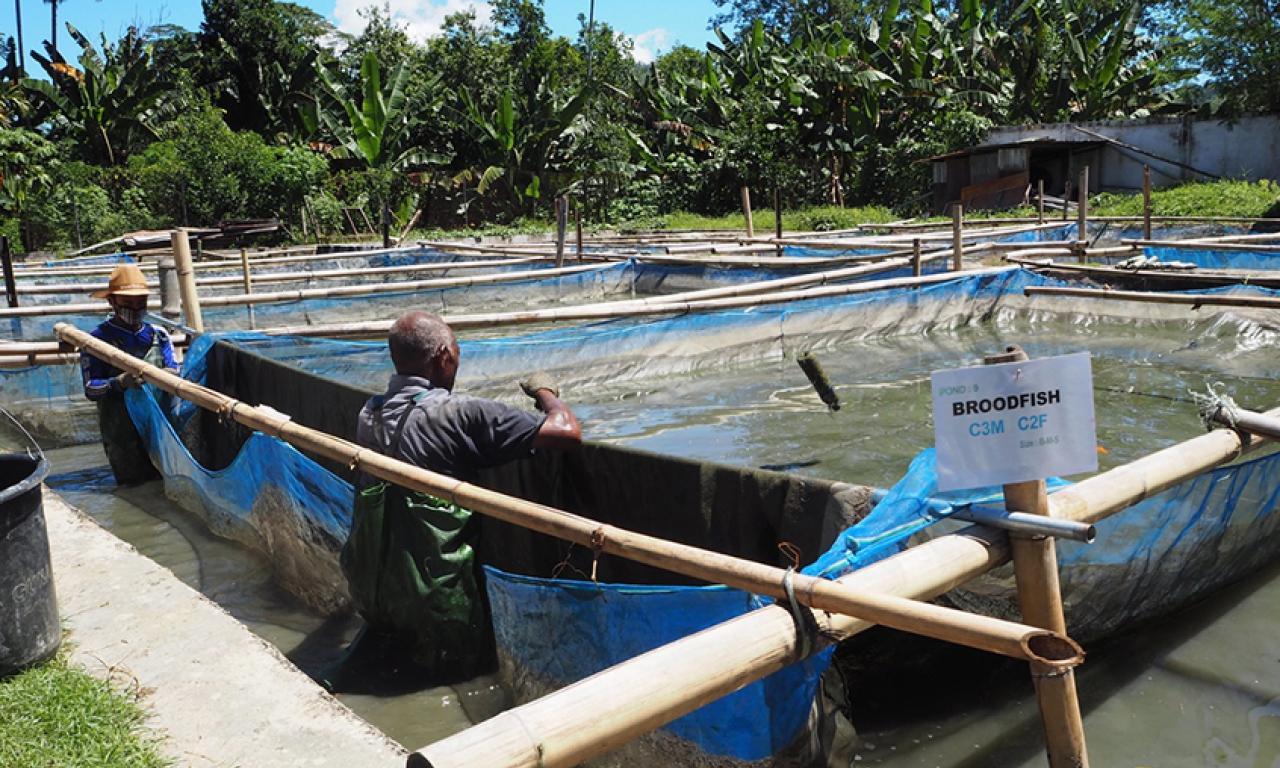
Recommended publications
Efforts by WorldFish, development partners and the government to develop aquaculture in Timor-Leste over the last 10 years have shown success, laying the way for the sector’s continued growth to combat poverty and malnutrition.
Roberto Bau Maria has been farming fish for nearly 20 years. Yet for most of the time, the father-of-five didn’t know the right way to grow them, so he hardly produced any fish.
But since 2017, when he got involved with a WorldFish project, things have turned around completely.
“My family and I now eat fish twice a week, which we weren’t doing before,” says the 40-year-old from Balibo village.
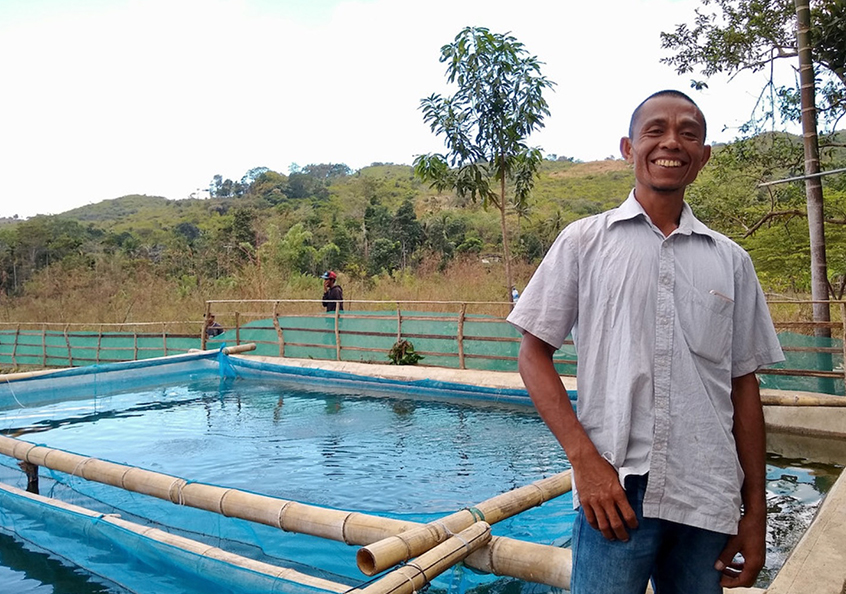
“We also sell some of our fish for USD 3.50/kg to the government’s school feeding program and local community members,” says Roberto, who makes USD 2 profit per kilogram of fish sold.
“I like fish farming because it provides us with food security and a way to make some money.”
Roberto’s story shows the potential of aquaculture to impact on lives in Timor-Leste, and since 2009, WorldFish has been working with the Timorese Government and development partners to fully realize the sector’s potential.
Developing the strategy
In the half-island nation of Timor-Leste, 40 percent of people live below the national poverty line, and malnutrition is widespread, with stunting affecting around half of children under five.
Since 1999, when the country gained independence from Indonesia, the government has focused on reversing these trends—and aquaculture is seen as key means to do that.
“The development of aquaculture will boost the production and access to fish—a nutritious source of animal protein—which is a key government priority to address poverty and malnutrition,” explains Joaquim Martins Gusmao, Minister of Agriculture and Fisheries, Timor-Leste.
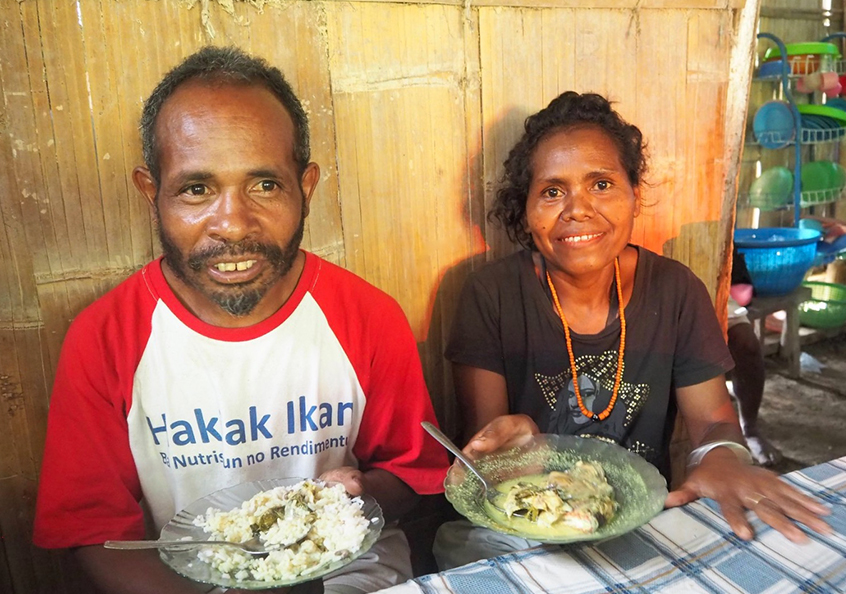
In 2010–11, WorldFish worked with the National Directorate of Fisheries and Aquaculture (NDFA) to develop the Timor-Leste National Aquaculture Development Strategy (2012–2030).
The strategy sets out some key targets for 2030—to increase fish production to 12,000 tons per year and reduce malnutrition by increasing fish consumption from 6.1 kg to 15 kg per person each year.
“These targets are achievable because the country is endowed with a favorable resource-base for tropical aquaculture; basic infrastructure like roads and power supplies are developing; and there is a buoyant market for fresh fish,” says Shwu Jiau Teoh, GIS Scientist, at WorldFish.
Tilapia, which Timorese people like to eat, is a tropical fish that thrives in the warm and consistent climate conditions of Timor-Leste and the type of low input system that’s used.
Given these qualities, it has great potential to play a major role in the future growth of aquaculture in Timor-Leste.
Improving access to quality seed
Despite the favorable resource base, there had been little fish farming in Timor-Leste until recently. A key factor was that farmers didn’t have access to seed.
Since 2014, WorldFish has worked with the government and partners to find local solutions to this challenge in line with the national aquaculture strategy.
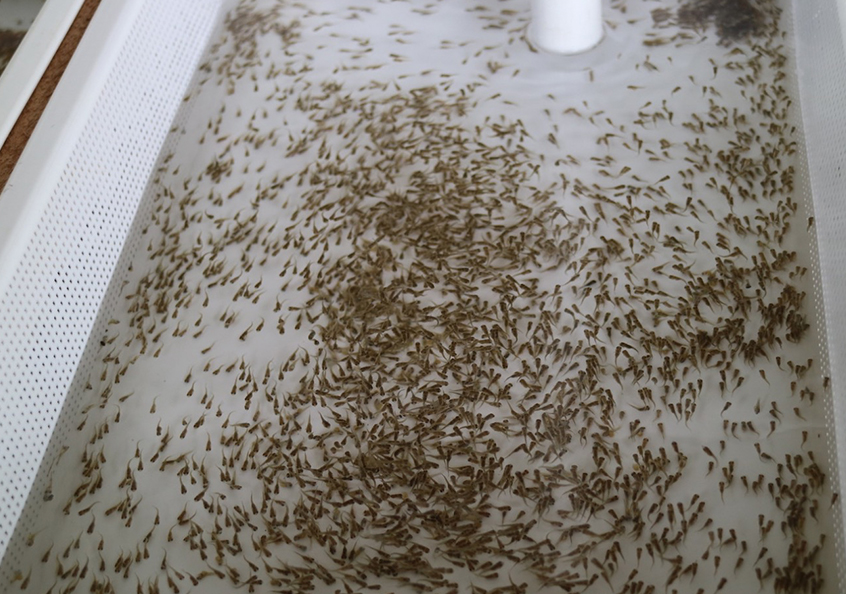
Under the Partnership for Aquaculture Development in Timor-Leste (PADTL) project, WorldFish re-developed a government hatchery at Gleno in March 2016 and introduced genetically improved farmed tilapia (GIFT).
GIFT is a fast-growing strain of tilapia developed by WorldFish and partners for over 30 years that’s farmed in over 14 countries.
“The hatchery follows rotational breeding of GIFT cohorts to minimize inbreeding. This ensures that the genetic quality of the broodstock is maintained for generations,” explains Adrianu Dani F.DK (Dani), Chief of Hatchery Department, Ministry of Agriculture and Fisheries (MAF).
Since breeding began at Gleno hatchery in January 2016—using GIFT broodstock imported from WorldFish headquarters in Penang, Malaysia—over 1.5 million GIFT monosex fingerlings have been produced and distributed to fish farmers across Timor-Leste.
Very quickly, demand for monosex GIFT fingerlings exceeded supply from Gleno. The project therefore worked with the government and fish farmer Joao Da Silva to construct and launch the first private GIFT hatchery in April 2019 in Leohitu, Bobonaro.
“The Leohitu hatchery was established under a public-private-partnership (PPP) model, whereby it will acquire quality broodstock from the government hatchery at Gleno and produce monosex fingerlings to sell to local farmers and development organizations,” says Dani.
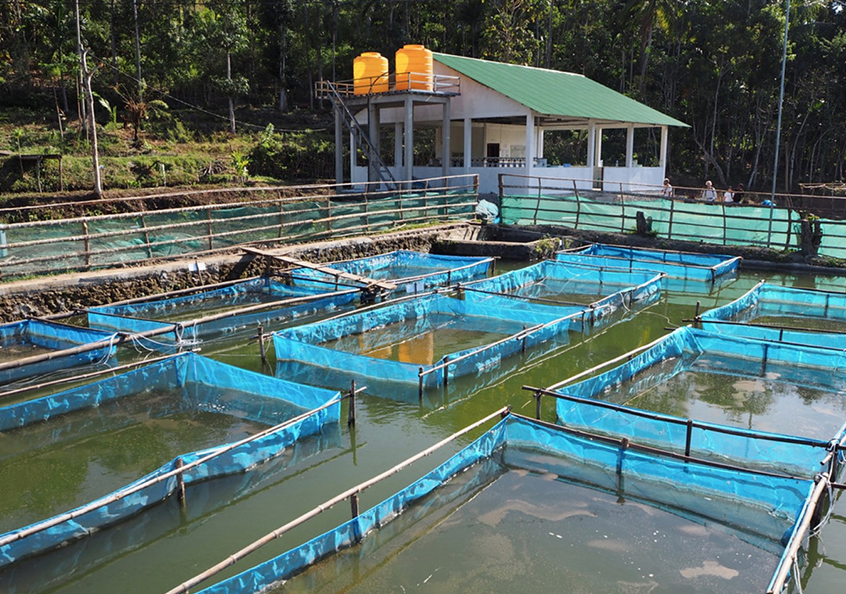
Training farmers and building capacity
Side by side with developing the hatcheries, WorldFish has tested and validated sustainable tilapia farming technologies through on-farm trials managed by farmers. These practices have been documented in the Better Management Practices (BMP) guidelines.
To disseminate these practices, WorldFish introduced a modular training program under the COMPAC-TL (2014–16) and PADTL (2014–19) projects, and worked to develop an extension approach suited to local farming systems and conditions.
“The training is based on a farmer field school (FFS) approach that involves group-based learning using participatory tools and techniques,” explains Silvino Gomes, PADTL Project Coordinator, WorldFish.
The training, consisting of seven day-long sessions delivered over six months, included topics on pond construction, stocking, maintaining water quality, feed preparation and feeding, integrating vegetables and managing disease, and harvesting and marketing of fish.
One of the key topics was teaching farmers how to make their own low-cost fish feed using local ingredients like rice bran, cassava flour, leucaena leaf meal and salt.
“Feed has a big impact on fish growth and feed costs have the biggest impact on farm viability,” explains Gomes.
“So, we teach farmers to fertilize their ponds using locally-available chicken or pig manure to create natural food in the pond, and to also feed them with farm-made fish feed pellets.”
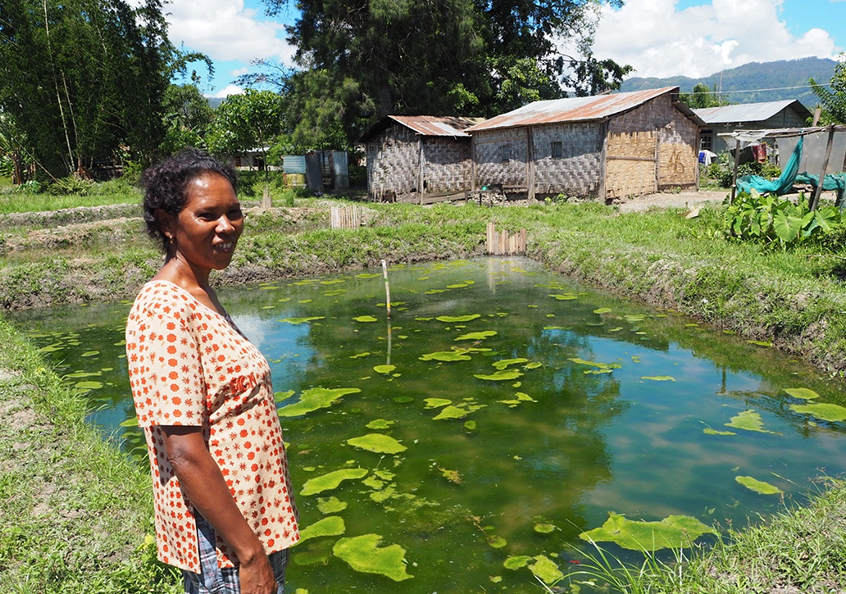
The COMPAC-TL project used the FFS approach to train 1500 farmers, 90 percent of whom were new fish farmers. The PADTL project further refined the FFS training modules, which were delivered to more than 250 farmers.
The trained fish farmers are seeing impressive results. In 2018, PADTL fish farmers produced over 9 tons of fish—a more than three-fold increase on their 2017 tilapia production. Of the total production, 50 percent was eaten by households and the rest was sold, generating over USD 18,000.
An equal success has been the capacity building efforts of the PADTL project funded by New Zealand Aid.
“The project has helped to build the skills and knowledge of government staff and partners at all levels to operate the GIFT hatchery, run farmer training, manage databases and collect data using mobile devices,” says Gabrielle Isaak, Deputy Head of Mission/First Secretary, Development, New Zealand Embassy, Dili, Timor-Leste.
“These efforts are key to investing in people, and to the long-term sustainability of the aquaculture sector.”
Sustainable aquaculture technologies and Scaling up
The PADTL project has supported the government to develop aquaculture using a systems approach—by developing sustainable seed and feed systems and a suitable farmer training method, and building the capacity of MAF and other partners.
It’s an approach that’s proved to be effective. In 2009, there were 1,280 farmers producing 45.6 tons of all kinds of fish from 41 hectares of ponds. By 2018, there were over 2500 farmers with a total annual production of over 80 tons of tilapia alone from 40 hectares of ponds.
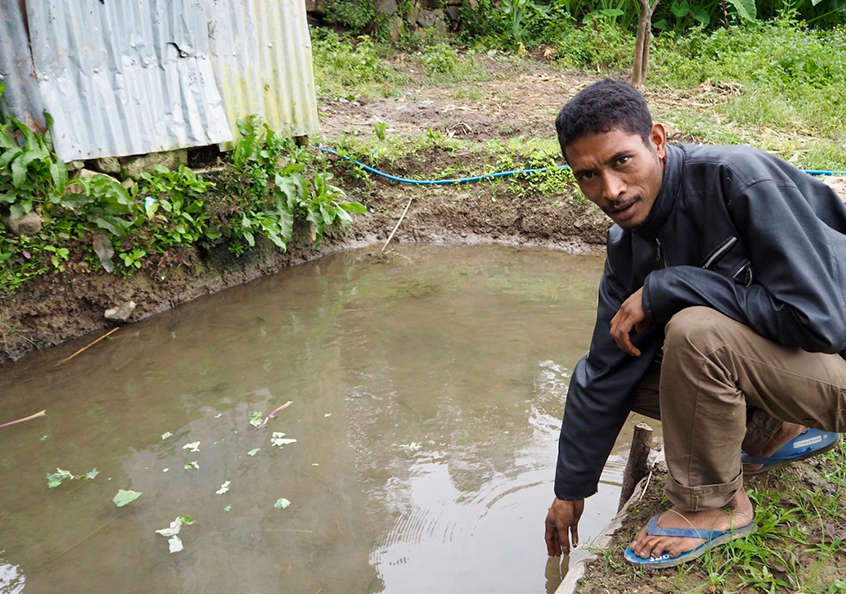
Now, significant investment and scaling are required to meet the government’s 2030 targets, which are very achievable says Dr. Jharendu Pant, Senior Scientist, Aquaculture, WorldFish.
“There needs to be 10–12 commercial hatcheries across Timor-Leste each producing around 5 million fingerlings, which is doable by replicating the Leohitu PPP-model hatchery.”
“Many FFS-trained farmers following the BMP guidelines are producing an extrapolated yield of 4.3 tons/ha, but the top 10 percent are getting 7.0 t/ha or even more. We can further support farmers to close this yield gap of around 2.7 t/ha.”
Pant says that the total pond area needs to grow from 100 hectares currently to over 800 hectares, which will require a large number of small- and medium-scale farmers taking up tilapia farming, as well as the massive roll out of training.
With the higher production, there also comes a need and opportunity to connect more sellers with buyers like the school feeding program and hospitals.
“This work is already underway, with Bobonaro farmers being supported to sell over 600 kg of fish to the school feeding program in 2018,” notes Pant.
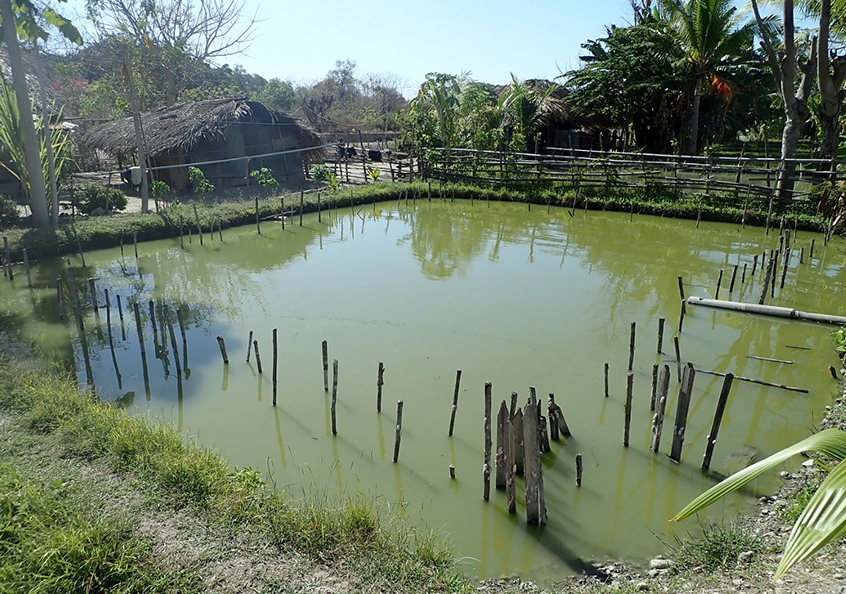
A coordinated approach
In the future, tilapia will likely contribute over two-thirds of total aquaculture production in Timor-Leste. The remainder will come from carps, milkfish and other brackish water and mariculture species.
Realizing this aquaculture growth to meet national government targets will require the accelerated and coordinated scaling-up and -out of the proven aquaculture development model by all stakeholders.
For this reason, WorldFish in partnership with MAF has initiated the annual aquaculture forum since 2017 to enable stakeholders to share their visions, activities, challenges and opportunities for the sector.
“The government alone can’t reach the aquaculture targets without the private sector. And the private sector can’t do it by themselves because they have limited technical capacity or finance,” says Pant.
“With everyone working together, achieving the sustainable development of the aquaculture sector will be easy.”